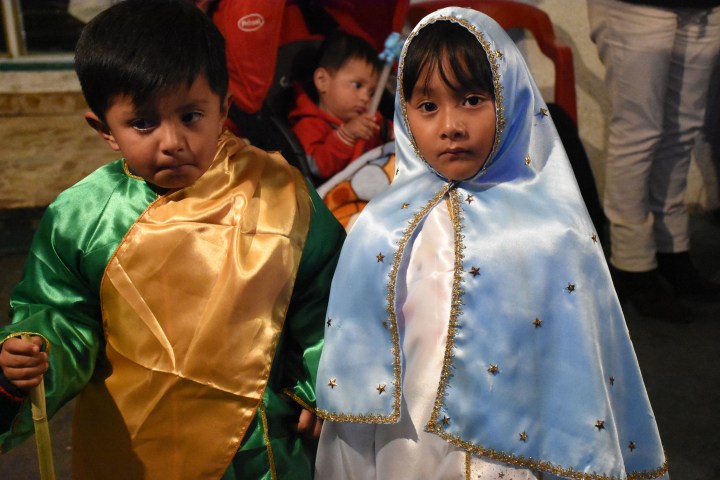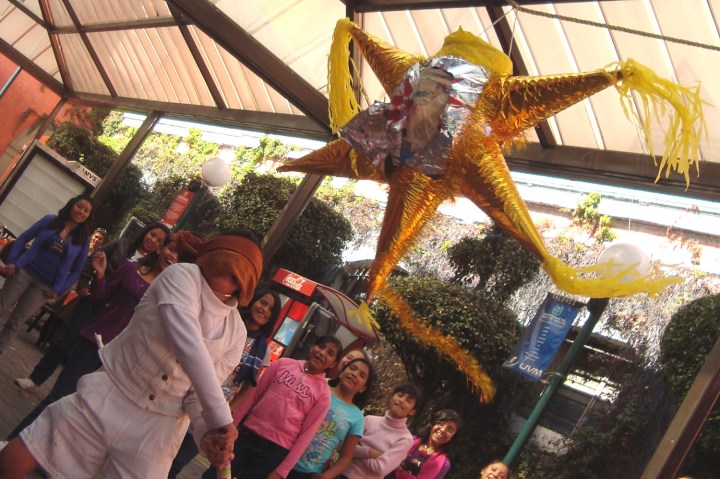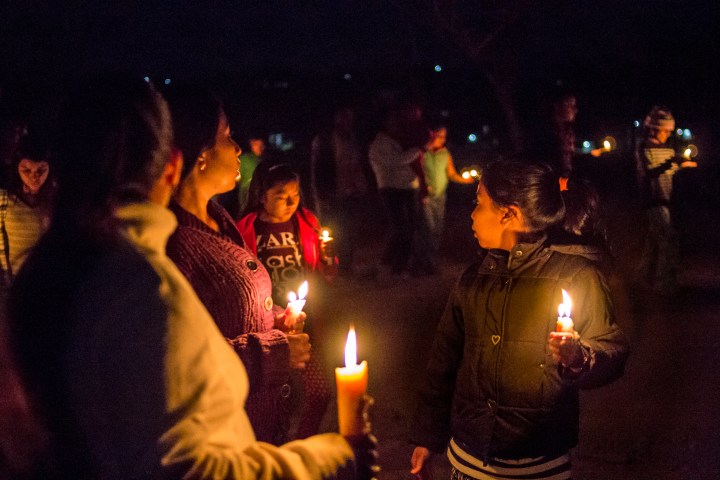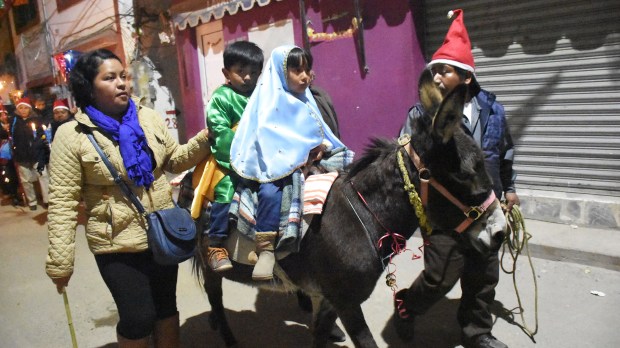It takes different names and different rituals, but the recreation of Joseph and Mary’s journey is one of one the most beloved Christmas traditions around the world
For many people, when they think of Christmas, traditions like creches, Advent calendars and Christmas carols come to mind. But for much of Catholic world, nothing says Christmas like attending “Las Posadas,” the recreation of the journey of Mary and Joseph during the hours leading up to Christ’s birth.

Traditionally celebrated between December 16 and December 24, “Las Posadas” (Spanish for “the inns”) has its roots in late 14th-century Mexico and became a widespread tradition in the country by the 16th century. Historical records show that in 1587 Brother Diego de Soria, from the Convent of Saint Agustín de Alcoman, was authorized by Pope Sixtus V to celebrate the “Misas de Aguinaldos,” a series of special Masses held on each of the nine nights before Christmas Eve– a symbol for the nine months of pregnancy leading to Christ’s birth. In order to spread biblical stories to what was then a mostly illiterate population, local priests would hold small plays recreating salient events from the scriptures. This meant that each of the nine special Masses was accompanied by a play recreating the events that led to Christ’s birth. Some believers would play the roles of the Holy Family seeking shelter while others would be scripted as the innkeepers refusing shelter to the foreign couple.

With time, the tradition of recreating the tribulations of the Holy Family became an institution in and of itself. It takes different names in different countries but it is mostly known as “Las Posadas,” a reference to the inns where Mary and Joseph sought shelter as they made their way from Nazareth to Bethlehem. Sometimes people recreate the event by dressing up as the Blessed Mother and St. Joseph, other times they carry statues of the Holy Family, but “Las Posadas” always features candle-lit processions of some sort. The procession usually takes place in a town’s main streets, with residents taking on the role of innkeepers that refuse to offer shelter to the Virgin Mary and St. Joseph, and ends up in the local church during the last day of the event.
But let’s find out more about how each country celebrates this beloved Christmas tradition.
1. Mexico
Mexico can be considered the birthplace of Las Posadas. It is here that in the 14th century the Spanish started to perform the first versions of the event that later became a staple of Christmas traditions. Each part of Mexico has a slightly different take on the tradition, but in most places “Las Posadas” still follows the same ritual in which some people play the role of Joseph and Mary, asking for shelter, and some people play the role of innkeepers, at first refusing shelter and then, after being asked three times, eventually allowing the couple in the home. A traditional formula is recited by each group, with the first line famously reciting: “En el nombre del cielo, os pido posada, pues no puede andar mi esposa amada” (“For the love of God, give us shelter as my beloved wife can no longer walk”).
Special foods are prepared for this tradition, including romeritos, boiled seepweed mixed with mole sauce and shrimp jerky, champurrado, a hot chocolate drink prepared with corn flour, cinnamon, nuts and orange zest, and atole de guayaba, made with corn flour, milk and guava. And for children, the highlight of the event is without a doubt the piñata, a colorful container full of candy that is left hanging from the ceiling. Children and adults alike get to break the piñata, to let all the candies out. In some rituals, candies are shaped like seven-point stars, each point representing one of the deadly sins that symbolically gets destroyed in the event.

2. Guatemala
The first version of “Las Posadas” held in Guatemala was probably the one led by Brother Pedro de San José Betancur, who on December 24, 1663, led a small procession across the streets of Antigua, Guatemala, carrying the images of St. Joseph, the Virgin Mary and Christ Child. Today, the celebration takes a similar form as in Mexico with believers touring from home to home in the nine nights before Christmas eve. Each “home” visited during the procession is picked in advance and it is a huge honor for families to be selected as one of the “inns.” Typical foods consumed during the ritual include tamales, a dish made with a corn based dough mixture filled with meats, beans and cheese, and ponche de frutas (fruit punch).
3. Honduras
In Honduras, “Las Posadas” is mostly enacted by eager children who wait for months to take part in the beloved ritual. Each group of children learns by heart the verses with which they should ask for shelter, especially the famous line “En el nombre del cielo, os pido posada, pues no puede andar mi esposa amada” (For the love of God, give us shelter as my beloved wife can not longer walk”). When children are finally welcomed by the innkeepers, they are met with food offers including local versions of tamales, made of pork or chicken wrapped in a banana leaf with rice, potatoes, peas and raisins, as well as sweets like rosquillas en miel, corn donuts soaked in honey, and torrejas, fried egg whites soaked in honey.
4. Philippines
The “Panunuluyan” (meaning “looking for lodging”) is the Philippines’ equivalent of “Las Posadas.” Filipinos love Panunuluyan with the same devotion that Latin American Catholics have for Las Posadas. But here, the tradition takes place on December 24 rather than during the nine days before Christmas. On Christmas eve, a procession consisting of singers carrying images of Mary and Joseph starts from the church and visits three local homes representing inns. The people who are part of the processions sing a request for shelter, but the innkeepers deny their request. Eventually, the procession makes its way back to church where it appears at the altar at midnight among great rejoicing.
5. Ecuador
In Ecuador the tradition of Las Posadas is known as Novena, a reference to the nine nights before the birth of Jesus, each representing one month of the Virgin Mary’s pregnancy. The roles for the play are usually assigned randomly: whoever picks a piece of paper with the name of Mary or Joseph or the innkeeper gets to play that part. After the actors recite the traditional formula, asking for shelter and getting rejected, they are eventually welcome in one of the homes where a celebrations is held, including reading Bible verses, singing Christmas carols (villancicos) and eating buñuelos, ball-shaped deep-fried dough soaked in honey.


